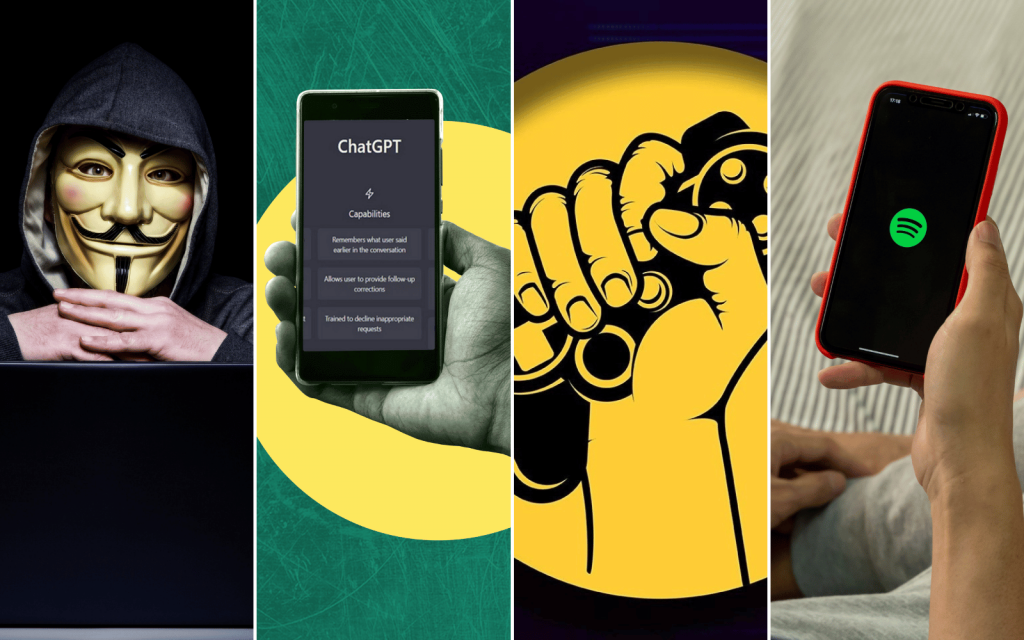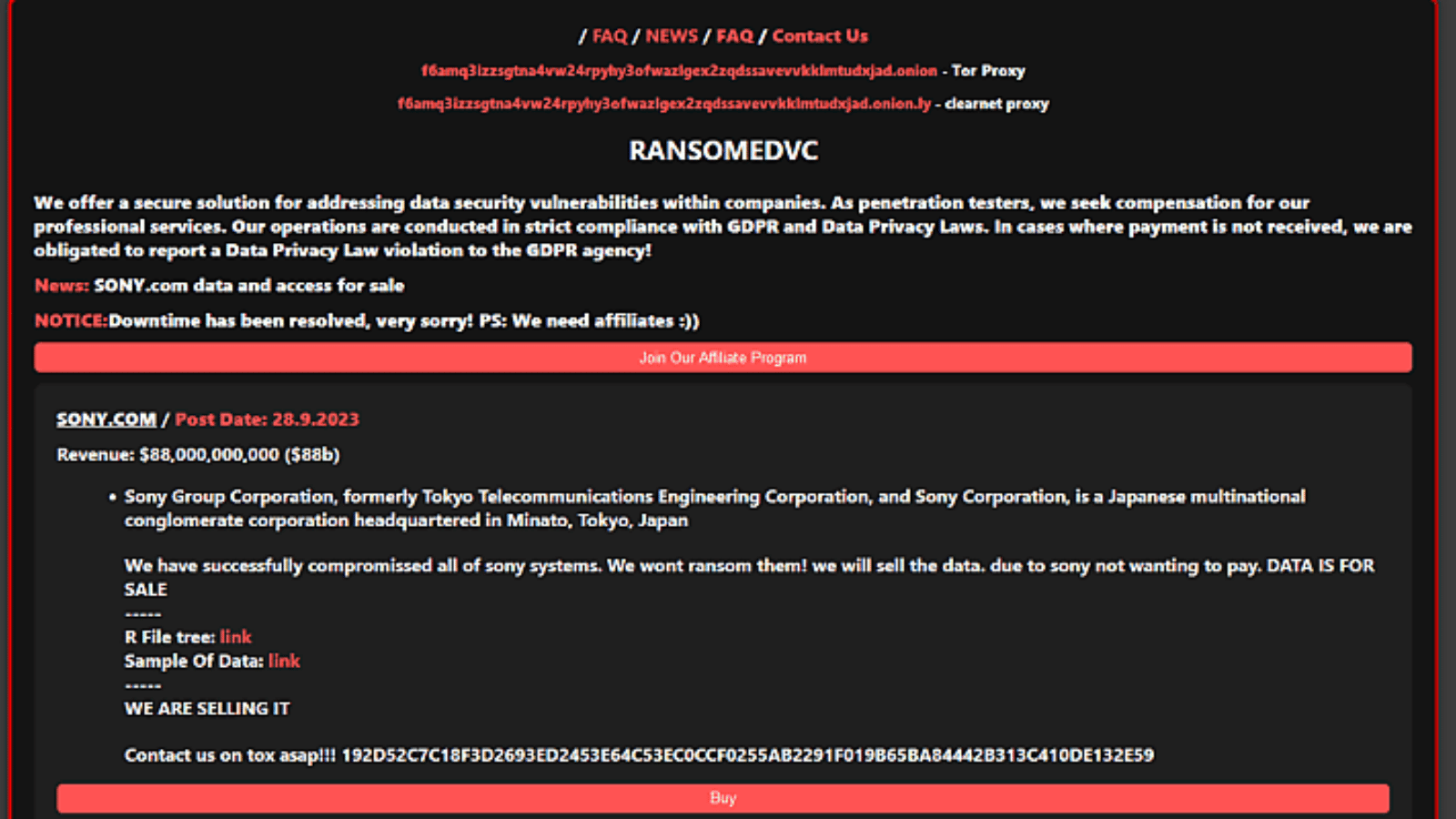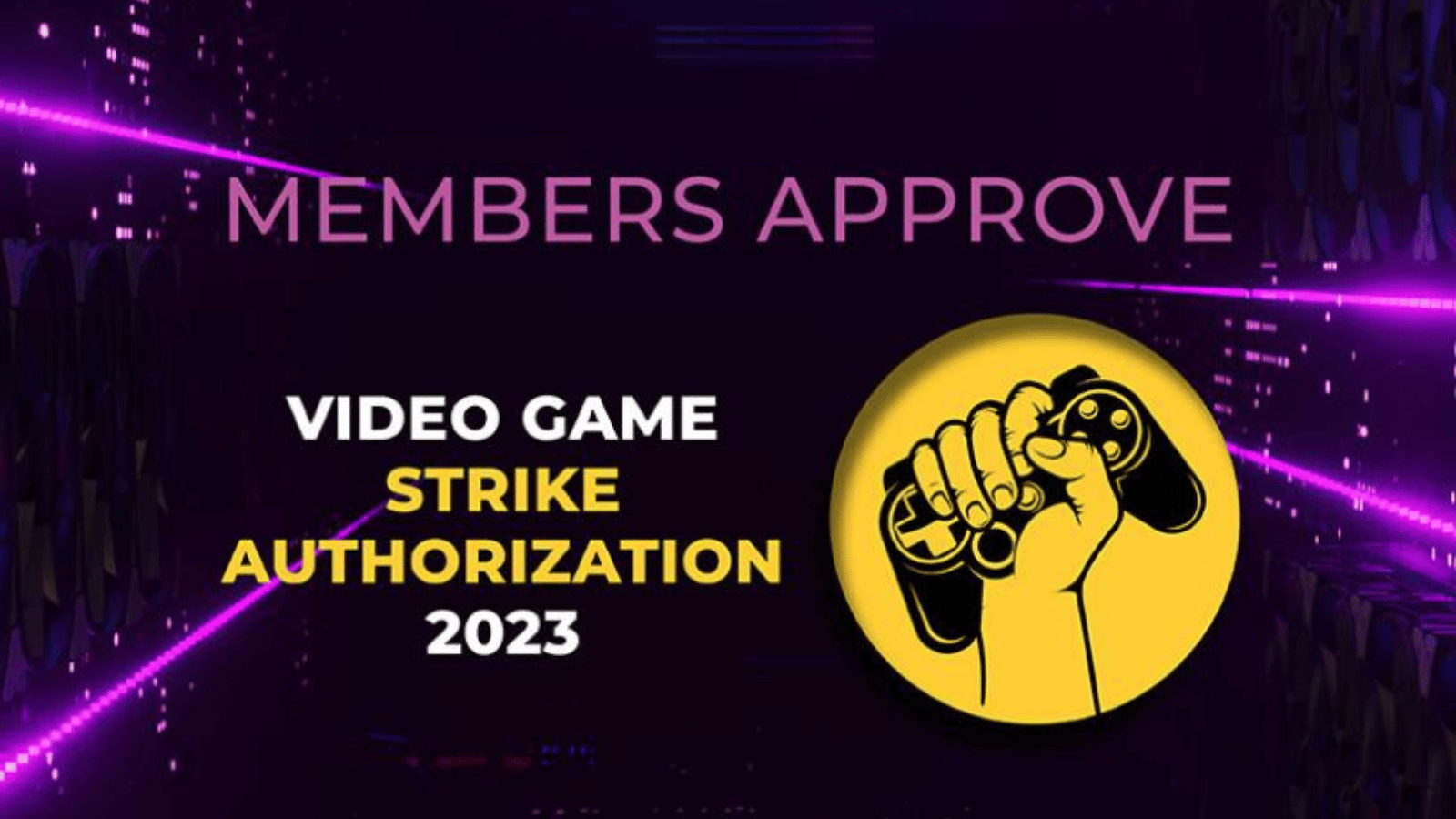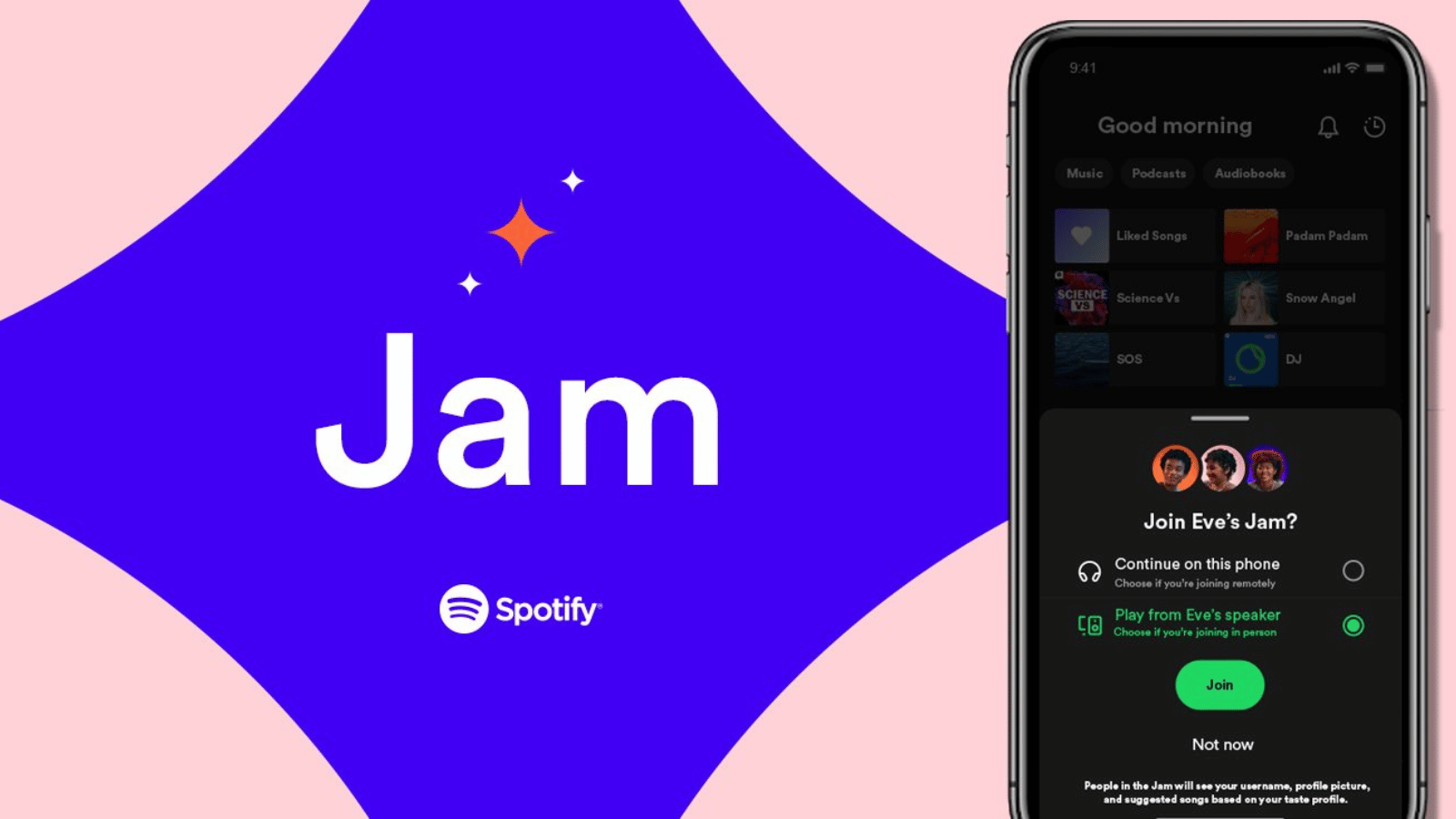Sony hack and slash
Sony has been hacked. At least, that’s what a report from Cyber Security Connect is claiming, with a newcomer in the ransomware space, Randsomed.vc, taking the credit. While the group’s claims haven’t yet been verified, it says that the stolen data is up for sale, due to Sony’s unwavering stance of not paying ransome demands.
“We have successfully compromissed [sic] all of sony systems. We wont ransom them! we will sell the data. due to sony not wanting to pay. DATA IS FOR SALE,” it said before hammering the point home with “WE ARE SELLING IT.”
There is some proof from the hacker’s end that the breach is real, and data is up for sale. That includes an internal log-in page, an internal PowerPoint presentation, some Java files and a file tree covering the entire leak, which appears to stop short of 6,000 files. In Cyber Security Connect’s eyes, the “proof-of-hack data” is “not particularly compelling information on the face of things.”
It’s possible that the potentially stolen data could still leak out, regardless of whether the group gets paid or not. Sony has yet to comment on the situation.
ChatGPT can see, speak and hear now
ChatGPT, that large language model (LLM) that’s got your grandparents so hyped up, is about to become a whole lot smarter. The artificial intelligence startup, OpenAI, announced that its crown jewel of chatbots would be gaining some new powers – like the ability to “see, hear, and speak.”
The new features will be landing sometime over the next two weeks (for GPT Plus and Enterprise users), allowing them to choose from one of five personas, all kitted out with custom voices and names such as Juniper and Ember. It’ll produce matching audio of the text it generates – like when it conjures up some bedtime story or walks you through a step-by-step recipe.
And you can talk back to ChatGPT, too. The LLM is able to hear and contextualise what a user is saying, before responding in a meaningful way, making conversations come across as more… human. It’ll be able to see too, thanks to OpenAI installing a new pair of eyes. Send ChatGPT an image, and it’ll discuss it with you if you’d like. OpenAI’s example involves sending ChatGPT a picture of your empty fridge and having it help you decide what’s for dinner.
If you’re not one of the company’s Plus or Enterprise customers, you’ll have to wait until OpenAI decides the feature is ready for the masses. It says that will be “soon,” and it will roll out the features to “other groups of users, including developers.”
Videogame actors might go on strike
Talk about poor timing. Right as the months-long writers’ strike appears to have come to a tentative close, videogame actors might be gearing up for their turn. Voice actors and performers met earlier this week to vote on whether to authorize a strike. The union behind the call, SAG-AFTRA, is meeting with videogame studios later today to discuss the potential strike and contract negotiations.
SAG-AFTRA, currently representing American film and TV actors, is already on strike against Hollywood.
“The next bargaining session is scheduled for Sept. 26, 27 and 28, and we hope the added leverage of a successful strike authorization vote will compel the companies to make significant movement on critical issues where we are still far apart,” it said in a statement.
One of those issues is the use of AI within the industry, a thorn which still plagues those strikes involving Hollywood’s actors and writers. SAG-AFTRA is concerned about AI’s ability to reproduce or imitate a voice or performance without consent or proper repayment.
It’s also seeking improved wages for its 2,600 guild members, which haven’t struck since 2017 when it sought residual payments, pay transparency and voice protections.
Spotify’s Jam feature will remind you that you don’t have enough friends
Spotify is rolling out a new feature, dubbed “Jam”, a collaborative playlist that reminds us of its earlier Blend or the already-dead Duo Mix features, though on a much larger scale. Rather than combining two users’ tastes into a single playlist, Jam is meant for larger groups (of up to 32), handing control of a party’s playlist to everyone, rather than that one friend who just plays their mixtape on repeat and says he used to be a DJ.
A Jam session can only be created by a Premium user, though any Spotify user, Premium or not, can join a Jam and contribute as long as they’re on the same Wi-Fi network. To start a Jam, click the speaker icon or three-dot menu at the top of the screen and find the “Start a Jam” option from any song, album or playlist.
What makes Jam stand out from just being some bigger-than-most collaborative playlist is Spotify’s use of its personalisation tech found in its Blend playlists. Jam takes all the participating users into consideration and suggests music to suit all tastes. It’s also introduced ‘guest controls’ that’ll absolve the host of the sole responsibility to change the order of songs or remove them entirely, though this needs to be turned on by the host.
Jam is rolling out to all Premium users from today.








